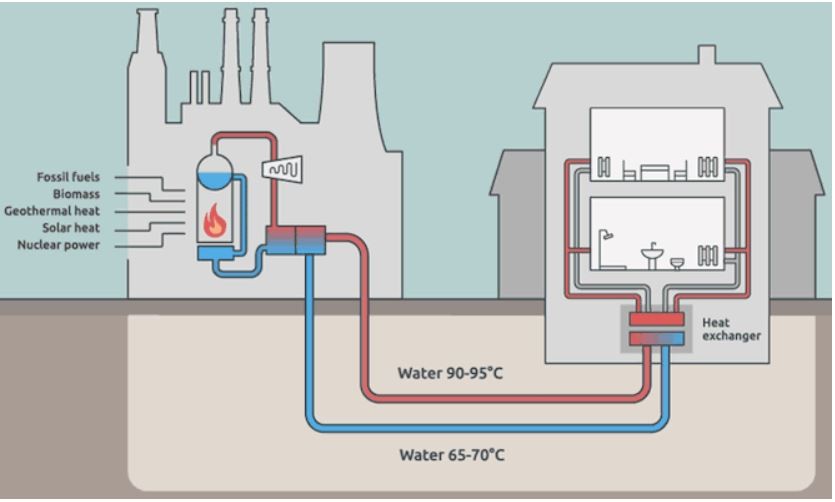
THIRD GENERATION OF DISTRICT HEATING SYSTEM (3GDH)
- The third generation of district heating is an advanced system that uses lower temperature heat sources and efficient technologies to increase energy efficiency and reduce carbon emissions.
The main components of 3rd generation of district heating is Heat source, Distribution network and heat exchanger.
- The heat source can be a variety of sources such as waste heat from industry or power generation, geothermal heat, solar thermal energy, or biomass. The temperature of the heat source is generally lower temperatures (below 100°C).
- The distribution network consists of pipes that transport the heated water from the heat source to the buildings. The pipes are typically insulated to reduce heat loss during transport (Refer fig.1.1)
Compared to the pipe concept of the previous generation where the pipes were placed in ducts and insulated at site, the 3rd generation pipe concept means reduced number of components required, less excavation, welding and mechanical labor needed and reduced heat loss through better insulation.

- Pre-insulated pipes buried direct into the ground without expansion joints.
- Pre-insulated pipes, leading to long lifetime of the pipes and reduced installation time.

- In each building, a heat exchanger is used to transfer the heat from the district heating system to the building's heating and hot water systems.
- The heat exchanger uses a heat transfer fluid to exchange heat between the district heating water and the building's heating system. The temperature of the district heating water is typically between 45°C to 70°C.
The third-generation district heating system works by circulating the lower temperature water through the distribution network, which reduces heat loss and increases efficiency. The lower temperature also allows for the use of more efficient heat exchangers in the buildings, further increasing energy efficiency. (Refer fig.1.2)
For various reasons, district heating’s CO2 emissions have roughly been cut to half during the third generation. Day by day, technologies moving forward to 4GDH, it's already started to initiate in 2020. The generational change has been pending for quite some time, as fourth-generation district heating solutions have been emerging into the market at a growing pace in the recent years.